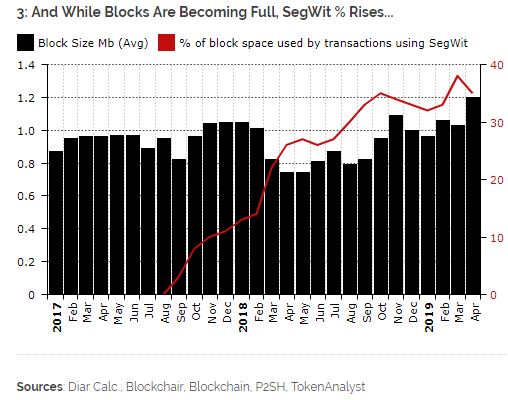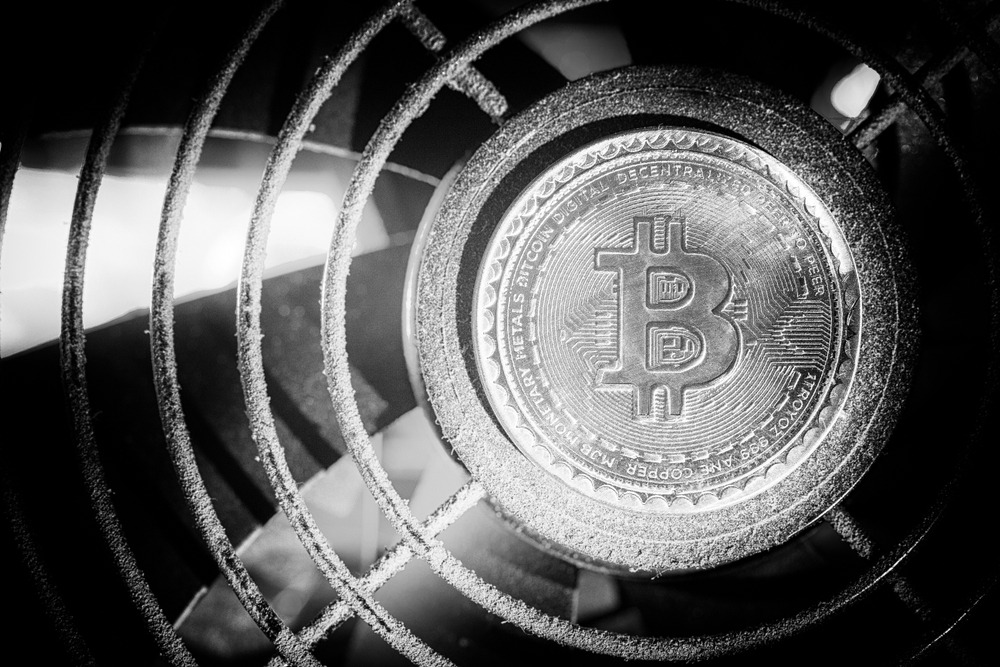By CCN: Research in the latest issue of Diar reveals that Bitcoin transaction fees skyrocketed 250% in April as BTC blocks grew nearly as full as they were during December 2017 when the Bitcoin price peaked at just under $20,000.
SegWit Usage Drops Average Fees Significantly
Fees were much lower than at that time, because SegWit usage has steadily increased in the intervening months. Diar writes:
“On-chain volume still heavily used for ramping on and off exchanges has been the main culprit as traders look for an opportunity with the price of Bitcoin rising 43% during April resulting in full blocks (see chart 3). But SegWit, the scalability solution that addresses the issue has also hit a high with the percentage of blocks using the mechanism averaging 35% alleviating fee pressures. 2018 average SegWit usage was only 26% and only 11% at Bitcoin’s peak highlighting the continued adoption by major players.”
Nevertheless, fees did jump 250% month over month. In total, Bitcoin miners collected nearly $14 million in fees alone.
Segregated Witness wallets and services are lowering fees, as expected. SegWit usage is reportedly around 35% at this point, with the expectation that it will continue to rise as more and more services look to save money. The higher this figure goes, the more accessible the network becomes.
With transactions taking less space, the cost per byte for later operations can be lower. The result is that the average fee collected for a transaction drops for other users. Increasingly, users are looking to alternative methods to save precious satoshis, including using Lightning Network.
Bitcoin Efficiency on the Rise Despite Fee Uptick
Users who want transactions confirmed faster typically pay a higher fee to have their payment processed sooner. The more people that do this, the higher the average fee goes.
Diar estimates that fees will be about 55% lower than the last time transactions peaked if their volume continues to increase. At the same time, fewer coins are moving – they’re just moving more often.
Lightning Network usage is also growing. According to 1ML, the number of Lightning Network nodes has grown by 5%. One city, Toronto, has more nodes than any other – 107, with a total of more than 1,200 channels. The Lightning Network as a whole has the capacity to transfer more than 1,000 BTC in seconds.
At the time of writing, the latest block was 575003. A total of 2,500 transactions were sent, collecting fees of over $3,200, making the average transaction cost just over $1.25. A few transactions paid over $17 in fees, while numerous transactions paid less than $2. Transactions were included with fees as low as 50 cents, though these transactions may have waited awhile to be confirmed.
While still far higher than alternative chains for transferring value such as Bitcoin Cash, the reduction in fees brought about by scaling technologies is a positive sign for Bitcoin.




